
#AIart
Way back in 2017 I started using the hashtag #AIart to identify my work that was using at least some form of AI, supposedly artifical intelligence.
I think it's becoming more SI - Superficially Intelligent. It's just there to take your art and ideas (I hate calling them "content") and turn them into entertainment. It's just a trick to keep people using a service or platform for longer
I've used #AIart a lot on my blog, Wandering in the Light. You can find many of my thoughts there. I'm okay with new tech tools, including real AI methods. But I'm concerned about the ethics of taking content from anywhere without giving credit or checking if it's true.
I have been investigating AIart for some time
A key moment that convinced me there was some creativge millage in using my own artwork to train an AI to "understand" my style was an image I created of Table Rock in Beaumaris back in june 2017, using Google Deep Dream. This is also shown in my hand drawn photos project.
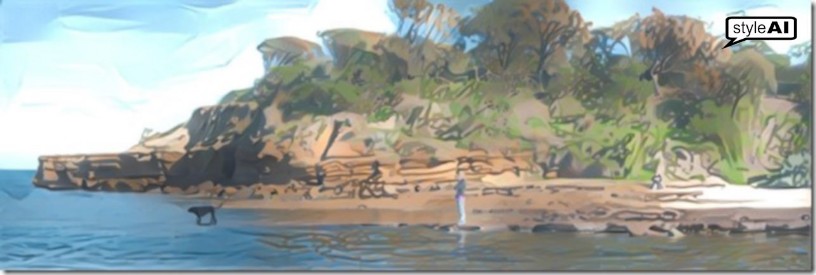
So why am I bothering to watermark images I have generated with AI?
Not sure, because it would be so easy for these days for an image theft to replace the watermark. I’m also not convinced that a largely proprietary system like adobe’s Content Authenticity Initiative will not be quickly and blatantly hacked. So at least in the short term it is going to become increasing difficult to identify images created with AI.
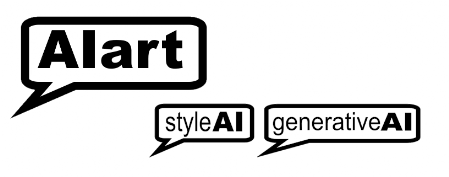
I’m not going throw my hands up and say all generative Ai is evil and not art, I want to have an open mind and experiment with the technology. So I see it is important that I let you know when I have used AI, and for images that means I’m adding a watermark.
In some cases I will be more specific, Generative AI is for those case that I just use a text prompt to generate the image. Style Ai are for those case where I use a starter/style image or smaller neural net train on a specific image (or limited group of images). Usually the starter imge will me my own.
Photography without a camera
I recently attended a workshop by Kate Robinson, who created images using generative AI and then made physical prints using the traditional cyanotype process. I've been fascinated by optical illusions, like Rubin's vase which can be seen as two faces or a vase. So I choose this theme for my work.
I then gave Stable Diffusion a detailed text prompt asking for “Male & Female Heads in profile facing each other, Professional photography, bokeh, natural lighting” I used the latest SDXL 1.0 model which generates very realistic images. This produced some great portraits which had sharp focus on the faces and soft, blurred backgrounds, while maintaining the illusion styling. I picked one of the four generated AI images with good tonal range, upscaled it, and inverted it to make a negative. Then printed this negative image
onto a transparency..
I sandwiched the sensitized paper with the transparency under a piece of perspex and exposed it to sunlight for about 25 minutes. When the transparency was removed the image had magically appeared on the paper! Somewhat faded, then briefly in vinegar to set the blue cyanotype tones. In only about 40 minutes, I had gone from an AI concept to a one-of-a-kind cyanotype print, all without ever using a camera!
This project showed me the creative potential in blending digital and analogue photographic methods. I'm re-excited to experiment more with generated AI images and bringing them into the real world through alternative printing processes.
Some thoughts on Generative AI images
The developments in generative AI art have been accelarating and its is impossible to really keep up, but I do try in my blog
To illustrate the improvements. I'm using the same text prompt (not too complex by the standards a lot of "Prompt Specialists", who I mostly consider as the "copycat lookatme" brigade on social media rather than truely creatives)
"bright blue sky granite rocks silhouetted trees with strong reflections watercolor painting by hans heysen"
The image on the left was created using Dall-E 2 and the image on the right was created in Stable Diffusion 1.5.
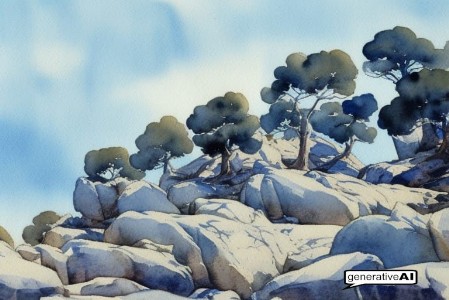
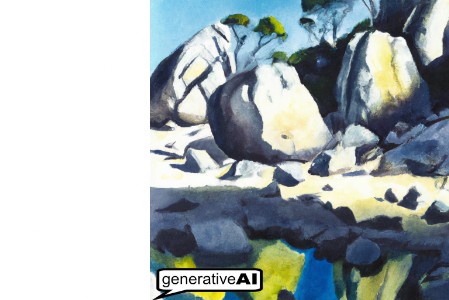
The images below are my own painting (for a recent Wednesday Wanderers) on the left hand side and the Style Tranfser generated by reprocessing the original photo using the style taken from my painting on the right hand side. I'm using the style transfer at Nightcafe Studio here.
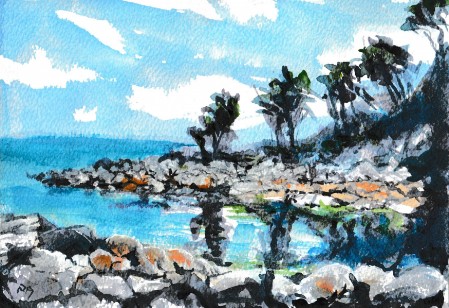
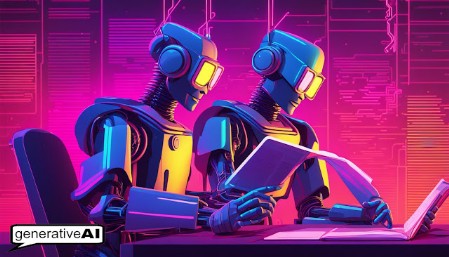
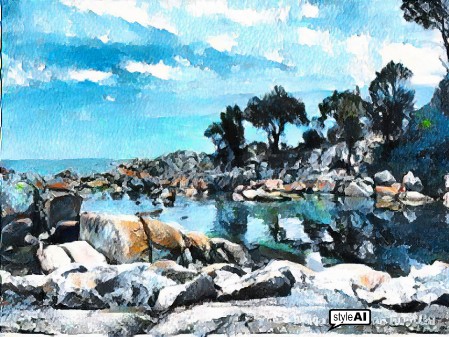
Testing Out New AI Tools for Writing - The Good 👍and The Bad 👎
I've been experimenting with some of the new large language AI models like ChatGPT Bard and Claude to help summarize and clean up my dyslexic writing. At first, it seemed amazing - I could just dictate my random thoughts and the AI would turn it into clear, readable text .However, I started noticing some issues: The AI can be overenthusiastic, more worrying is the outrageous claims and incorrect facts. Currently I'm still using this apporach but being careful to fact check and tone down many sections (or leave them out.
